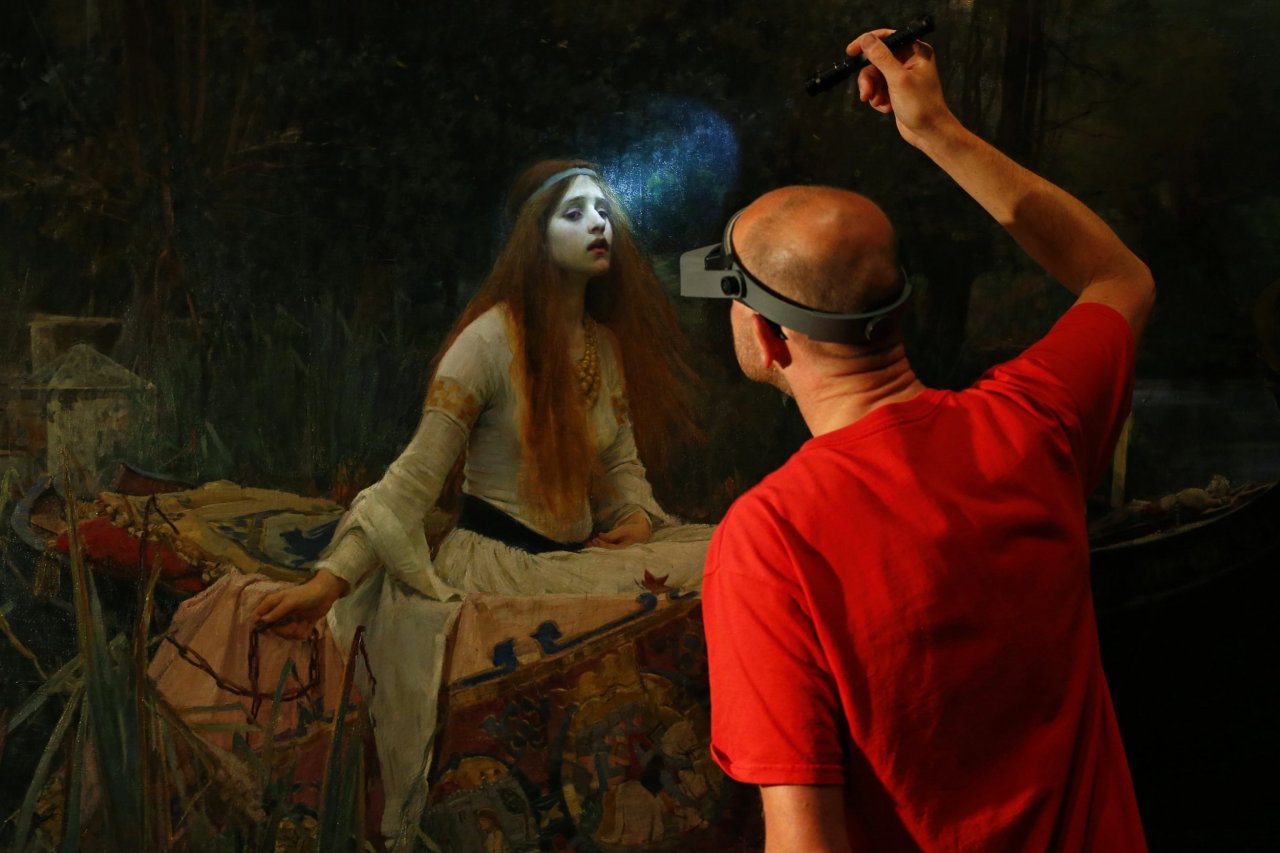
Graphene has become something of a scientific manna in recent years, with studies heralding bendable computer touch screens, long-lasting batteries, water desalination and ultra powerful solar cells, among others, all built on what is the world's thinnest (and potentially strongest) material. Think of any intractable problem, and graphene might be the silver bullet. By the end of 2014, more than 25,000 patent applications based on graphene had been submitted globally.
One unlikely benefactor of this miracle of modernity: the world of fine art. A group of European researchers working on a project called INSIDDE are developing a graphene-based scanner that they say penetrates deep beneath layers of paint, dirt and other materials to unveil previously unknown features of both two- and three-dimensional artwork—without laying a finger, let alone a scalpel, on the often-delicate cultural artifacts.
It's the latest in a growing toolkit of imaging technologies that art conservators can draw on to investigate paintings and other works. Infrared devices, for example, can put out wavelengths between 700 and 3,500 nanometers "to penetrate layer by layer, to sort of peel back images," on a piece of art, says Kristin deGhetaldi, a painting conservator and Ph.D. candidate at the University of Delaware. This is how, for example, a team of researchers discovered that there might be a "hidden" painting beneath Pablo Picasso's 1901 work The Blue Room. Then there are X-rays, which can be used to penetrate beyond the surface layer of a painting and identify certain pigments with high atomic number metals—think lead in white paint and mercury in vermilion—buried beneath, says Jennifer Mass, a senior scientist at the Winterthur Museum in Delaware. Mass was part of a team that used cutting-edge X-ray technology in 2014 on The Blue Room to reveal what was buried beneath: a painting of a bearded man wearing a bow tie.
But there are limitations to these technologies: Pigments with low atomic numbers like ultramarine don't show up on X-rays, and infrared imaging is mostly limited to revealing the underdrawings in paintings. The new graphene-based device uses terahertz radiation, which falls between infrared and microwave radiation on the electromagnetic spectrum, and its inventors say it can reach intermediate layers in paintings that even infrared can't access. They have been working with the Austerias Fine Art Museum in Oviedo, Spain, to test the device in real-world environments, and early results seem positive: "With the prototype we have been able to clearly distinguish between some pigments, which in some cases will avoid having to puncture the painting in order to find out what materials the artist used," said Marta Flórez Igual, a conservator and restorer at Austerias, in a recent press release.
The scanner is still in a trial and calibration phase. "It's too early to tell what it offers," says deGhetaldi, and ultimately, widespread adoption will likely depend on cost. The best infrared systems cost up to $100,000, and digital X-ray systems aren't cheap either. Javier Meana, a project manager on the INSIDDE team, says that early estimates suggest their graphene scanner will ultimately cost about $27,500 each.
Even if it does become conventional in conservation labs, it probably won't be able to fully replace the gold standard in fine art preservation science: taking the tiniest of paint samples ("the size of a period at the end of a sentence in 10-point Times New Roman font," as Mass puts it), encasing it in resin, cutting it into a cross-section and doing all sorts of experiments on it.
"I don't care what fancy imaging technique brings me," says deGhetaldi. "At the end of the day, if we are going to make any definite statements about the painting, I am going to have to take a microscopic sample."
But that doesn't mean terahertz imaging won't serve a purpose. "With each new noninvasive technique," says Mass, "we're getting closer to the information you can get with a cross-section sample. I think terahertz imaging will add something to our ability to the nondestructive study of objects of art."
About the writer
Elijah Wolfson is a Senior Editor at Newsweek, where he writes and edits on science, health, technology and culture. He is ... Read more














